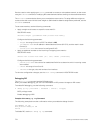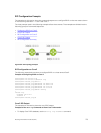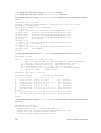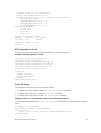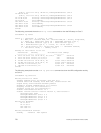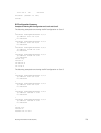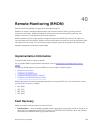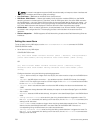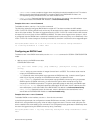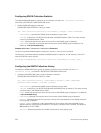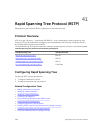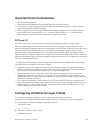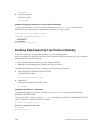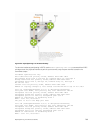
NOTE: A network management system (NMS) should be ready to interpret a down interface and
plot the interface performance graph accordingly.
• Line Card Down — The same as Interface Down (see previous).
• RPM Down, RPM Failover — Master and standby route processor modules (RPMs) run the RMON
sampling process in the background. Therefore, when an RPM goes down, the other RPM maintains
the sampled data — the new master RPM provides the same sampled data as did the old master — as
long as the master RPM had been running long enough to sample all the data. NMS backs up all the
long-term data collection and displays the failover downtime from the performance graph.
• Chassis Down — When a chassis goes down, all sampled data is lost. But the RMON configurations
are saved in the configuration file. The sampling process continues after the chassis returns to
operation.
• Platform Adaptation — RMON supports all Dell Networking chassis and all Dell Networking Ethernet
interfaces.
Setting the rmon Alarm
To set an alarm on any MIB object, use the rmon alarm or rmon hc-alarm command in GLOBAL
CONFIGURATION mode.
• Set an alarm on any MIB object.
CONFIGURATION mode
[no] rmon alarm number variable interval {delta | absolute} rising-threshold
[value event-number] falling-threshold value event-number [owner string]
OR
[no] rmon hc-alarm number variable interval {delta | absolute} rising-
threshold value event-number falling-threshold value event-number [owner
string]
Configure the alarm using the following optional parameters:
– number: alarm number, an integer from 1 to 65,535, the value must be unique in the RMON Alarm
Table.
– variable: the MIB object to monitor — the variable must be in SNMP OID format; for example,
1.3.6.1.2.1.1.3. The object type must be a 32-bit integer for the
rmon alarm command and 64 bits
for the rmon hc-alarm command.
– interval: time in seconds the alarm monitors the MIB variable, the value must be between 1 to
3,600.
– delta: tests the change between MIB variables, this option is the alarmSampleType in the RMON
Alarm table.
– absolute: tests each MIB variable directly, this option is the alarmSampleType in the RMON Alarm
table.
– rising-threshold value: value at which the rising-threshold alarm is triggered or reset. For
the rmon alarm command, this setting is a 32-bits value, for the rmon hc-alarm command, this
setting is a 64-bits value.
– event-number: event number to trigger when the rising threshold exceeds its limit. This value is
identical to the alarmRisingEventIndex in the alarmTable of the RMON MIB. If there is no
corresponding rising-threshold event, the value should be zero.
– falling-threshold value: value at which the falling-threshold alarm is triggered or reset. For
the rmon alarm command, this setting is a 32-bits value, for the rmon hc-alarm command this
setting is a 64 bits value.
782
Remote Monitoring (RMON)



